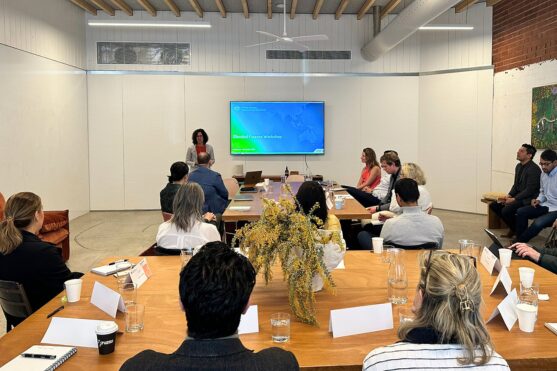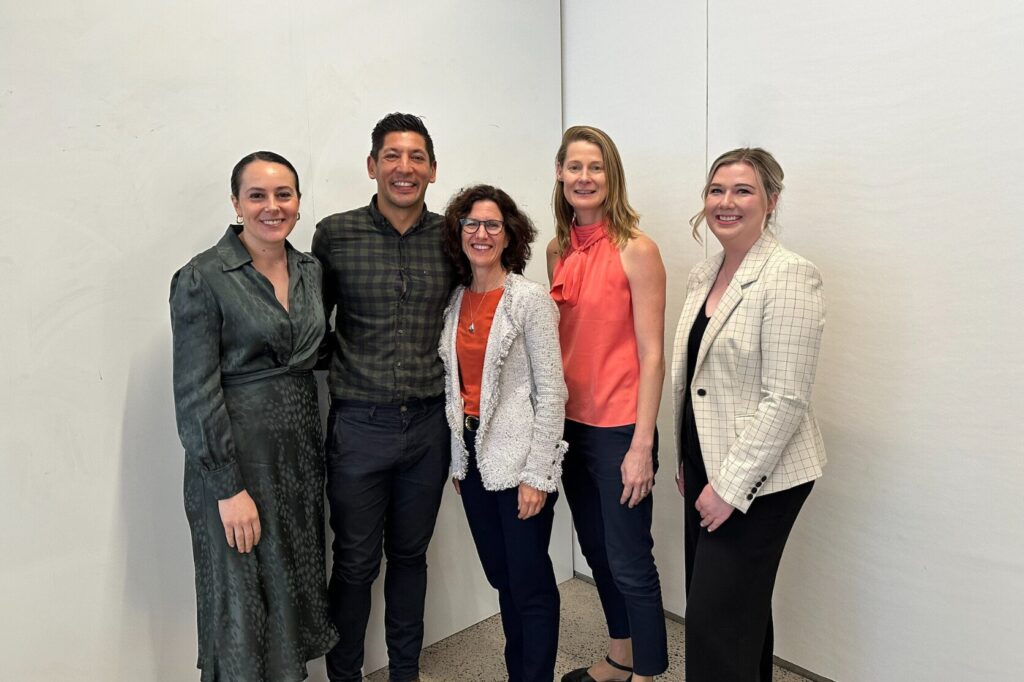Blended finance – philanthropy’s next frontier?

Two workshops on blended finance hosted by Convergence and supported by the Foundations Group for Impact Investing (FGII) and the Department of Foreign Affairs and Trade (DFAT) were held last week. Convergence is the global network for blended finance that aims to increase private investment in emerging markets and developing economies to advance the UN Sustainable Development Goals (SDGs) and the Paris Agreement. CEO Joan Larrea was the special guest speaker at the events. Here, we provide an overview of the key insights.
Blended finance is a structuring approach that allows organisations with different objectives to invest alongside each other, while achieving their own objectives (financial, impact or a combination of both). The goal of public and philanthropic investors in a blended transaction is to mobilise additional finance that wouldn’t otherwise participate in a deal that is designed to create social or environmental impact.
Highly effective philanthropic strategy
Blended finance is a highly effective philanthropy strategy for two key reasons. By providing a catalytic capital tranche in a blended finance transaction to a fund, bond or project that is mission-aligned for a philanthropic organisation, a greater volume of capital flows to a cause your organisation cares deeply about. The second core tenet of blended finance is capital preservation – depending on the transaction, a philanthropic organisation can expect that some or all the capital contributed to a blended transaction will be returned for them to deploy again over time.
Australia’s Department of Foreign Affairs and Trade (DFAT) has been utilising blended finance approaches in the aid and development program across the Indo-Pacific since 2013, with a large scale-up in this approach since 2023. DFAT has several investment mechanisms – Australian Development Investments, a $250 million fund of funds that invests in small and medium enterprises, the Private Infrastructure Development Group that develops sustainable infrastructure, and Australian Climate Finance Partnership that finances high-impact climate projects. DFAT also supports the scale-up of new blended finance structures, by running competitive design funding rounds through Convergence.

Catalyzing investment in places that need it most
DFAT brought Joan Larrea, CEO of Convergence to Australia last week to engage with stakeholders across the capital continuum. Convergence is the global network for blended finance in developing economies. Joan is an expert in catalyzing investment in places that need it most and has close to 30 years of experience in emerging markets’ investing. She has broad experience structuring impactful transactions over her career at the World Bank, Global Environment Fund and the US Overseas Private Investment Corporation (OPIC).
Joan presented at workshops in Sydney and Melbourne co-hosted by DFAT and the Foundations Group for Impact Investing (FGII) (a sector initiative hosted by Philanthropy Australia) with participants from Australian Foundations and Family Offices.
Participants heard how philanthropic organisations across the world are participating in blended finance structures – from providing early-stage design funding support, guarantees, technical assistance facilities, or first loss concessional debt or equity in a transaction.
Discussions were rich
Topics covered included:
- How can blended finance approaches be applied domestically?
- How can a foundation’s mandate be adjusted to allow its corpus or endowment to participate in a mission-aligned blended finance transaction?
- What is the difference between impact investing and blended finance?
- Hint: impact investing is a portfolio investing approach, whereas blended finance is a financial engineering or structuring approach to solve market failures. Impact investors often participate in blended finance transactions.
- The roles of intermediaries in blended finance and why organisations need to work with their financial advisers, impact advisers and boards to help them better understand when to consider a blended finance transaction.
- Who are the most common proponents in a blended finance transaction?
- When you should not use blended finance to solve a social issue.
Participants at both workshops were excited about the potential of a new financial structuring approach to drive high-impact outcomes here in Australia, and abroad in developing countries.
Key takeaways from the workshops
- When designing blended finance structures – consider scalable structures that are recognisable to institutional investors. The goal is to get them over time to be BIG, BORING (in their financial structure) and able to be REPEATED.
- If investing catalytically, use the power of your scarce catalytic money up front to get important commitments from partners on expected impact, future reporting, data and transparency requirements.
- Blended finance transactions require different parties that don’t normally interact to collaborate. Start connecting with institutional investors, development agencies, NGO’s and other foundations or family offices to learn from each other or collaborate on solutions.
Want to learn more about blended finance?
Convergence provides free online resources including, Blended Finance 101 training, case studies and regular publication of the State of Blended Finance in Developing Economies report to help organisations increase their blended finance literacy. Access these resources here: Blended Finance | Convergence.
DFAT’s Blended Finance and Investor Engagement Unit can be contacted at [email protected]. Contact us for more information on how your organisation can invest alongside DFAT’s blended finance mechanisms in developing countries in the Indo-Pacific region.
The Foundations Group for Impact Investing (FGII) exists to improve the supply and demand for impact capital through convening foundations and charitable funders who are interested in starting or enhancing their impact investing activities. Subscribe to FGII here.
Join DFAT and FGII for the Convergence Blended Finance session highlights at FGII’s Market Information Day on 22 October. Register here.